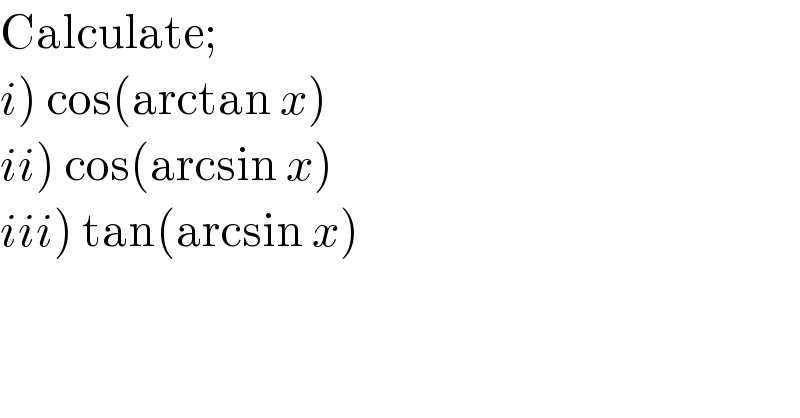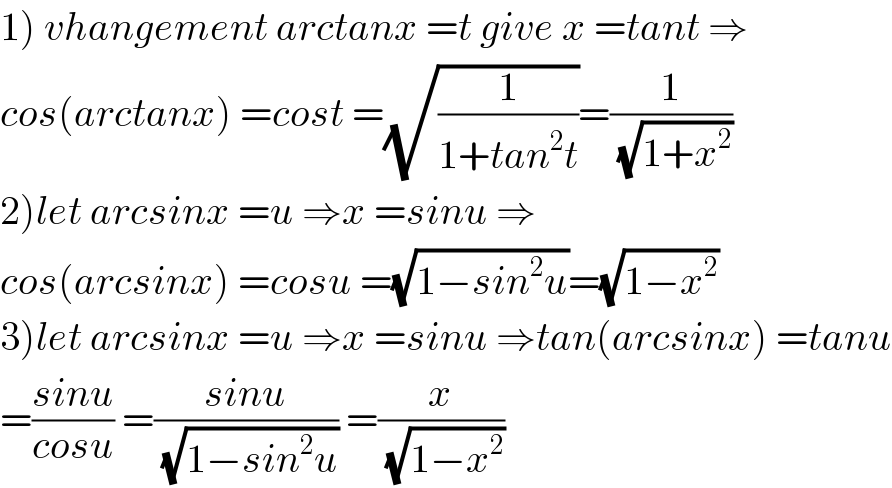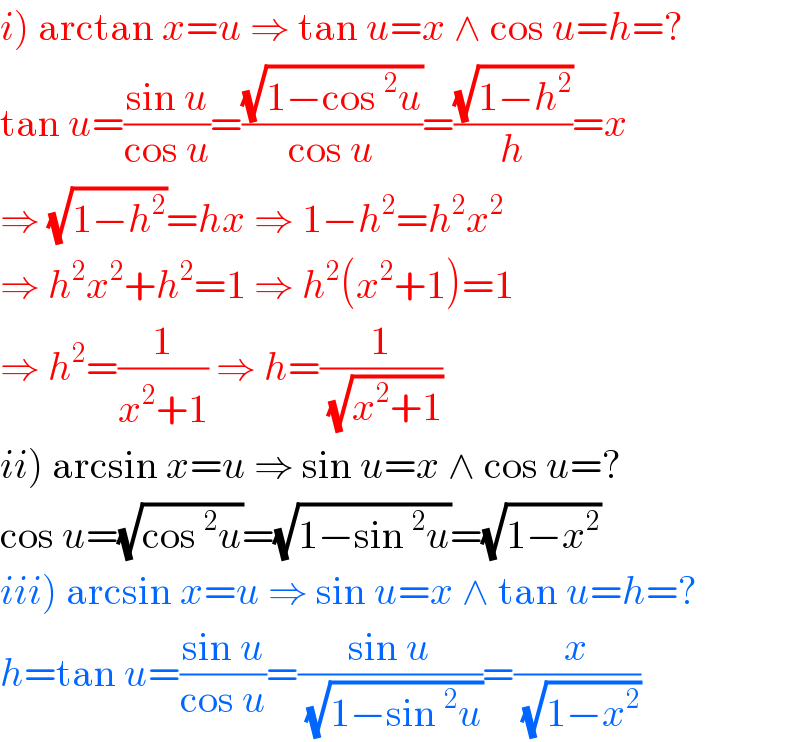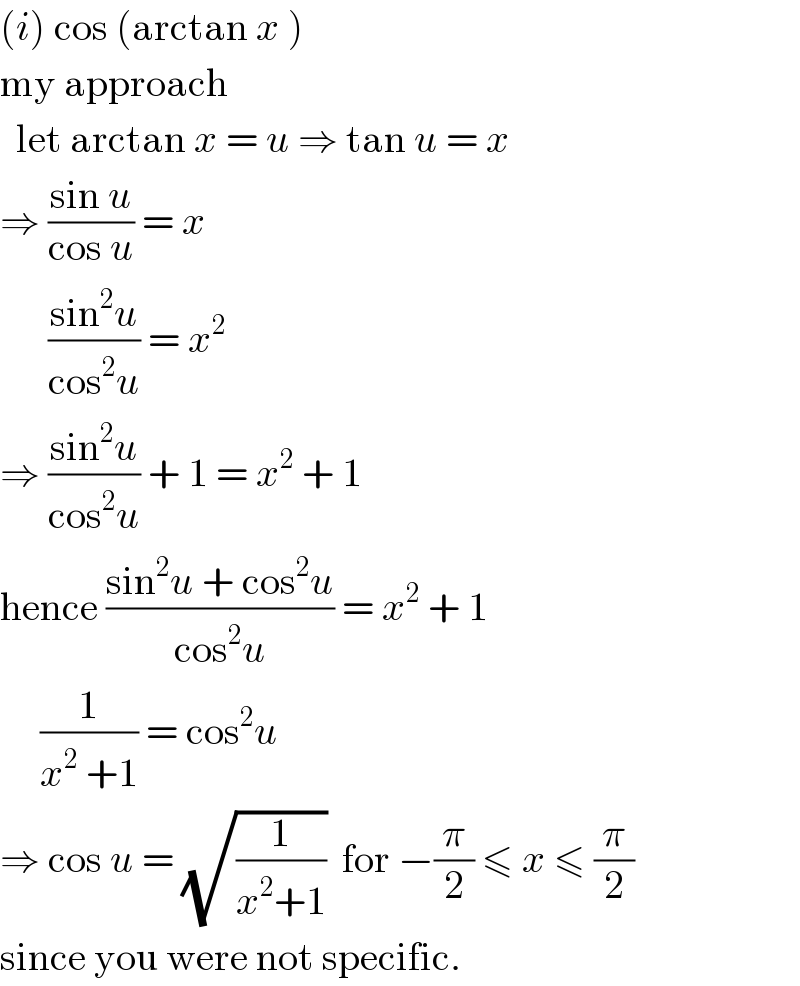
Question and Answers Forum
Question Number 93239 by Ar Brandon last updated on 11/May/20

Commented by mathmax by abdo last updated on 12/May/20

Commented by Ar Brandon last updated on 12/May/20
Thanks Mathmax ��
Commented by mathmax by abdo last updated on 12/May/20

Answered by hknkrc46 last updated on 12/May/20

Commented by Ar Brandon last updated on 12/May/20
hknkrc46 Thank you sir ��
Answered by Rio Michael last updated on 12/May/20

Commented by Ar Brandon last updated on 12/May/20
Thanks Mr Rio Michael. Good Day Sir ��
